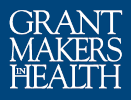2009 Terrance Keenan Award Acceptance Speech
Read about Mr. Yates’ groundbreaking work at The California Wellness Foundation and be inspired by his leadership as he guided his organization through unchartered territories and spearheaded a new approach to grantmaking.
A Tribute to Terrance Keenan at the 2009 Annual Meeting Seeing the Future with 20/20 Vision
Terrance Keenan, a founder of Grantmakers In Health (GIH), passed away on February 25 at the age of 85. Known for his leadership, innovation, and compassion, Mr. Keenan was a generous, consummate grantmaker whose career spanned more than 50 years in philanthropy, 46 of which were spent with the Robert Wood Johnson Foundation.
GIH Bulletin: April 2009 (2)
The Centene Foundation for Quality Healthcare (St. Louis, MO) awarded a $25,000 grant to Madison County Community Health Centers, Inc. (Alexandria, IN) to support the School-Based Health Clinic
School-Based Health Centers: Enabling Health Care Access for Children and Youth “Where They Are”
School-based health centers serve over 2 million students attending U.S. public schools each year and can help reduce health-related absences and support students to be healthy and ready to learn in the classroom.
GIH Bulletin: April 2009 (1)
Austin-Bailey Health and Wellness Foundation (Canton, OH) awarded grants totaling $197,490 to 14 organizations that address the health and wellness of local residents.
Behavioral Health and Public Policy
Behavioral health advocates ended a decade-long push for equity within private health insurance plans that cover mental health and addiction services with the passing of a new law that requires group health insurers to offer coverage for mental illness and substance use disorders on the same terms as physical illnesses.
GIH Bulletin: March 2009 (2)
The Blue Foundation for a Healthy Florida, Inc. (Jacksonville) awarded a $100,000 grant to the Orange County Health Department (Orlando, FL) for a program to educate and link pre-conceptual and pregnant women to local health clinics for oral health services.
CHIP Reauthorization: Details and Implications
This Issue Focus article summarizes a February 2009 Grantmakers In Health audio conference, which discussed the Children’s Health Insurance Program Reauthorization Act of 2009 and featured Cindy Mann, executive director of the Center for Children and Families at the Georgetown University Health Policy Institute.
Rural Health Care: Innovations in Policy and Practice
All too often discussions of rural health policy concentrate almost exclusively on the challenges in rural areas. But while it is true that rural America has not been immune to the effects of major economic and societal trends, rural areas’ responses to these challenges demonstrate that they are often ideal incubators for innovative policies and practices.
Effective Community Programs to Fight Health Disparities
Eliminating disparities in health status and health care has been an area of substantial interest and programming among health funders at the national, state, and local levels for well over a decade. The latest findings from research and ongoing experience on the ground allow us to assess the progress being made. Engaging with communities in their fight against disparities is also becoming increasingly important to funders.
